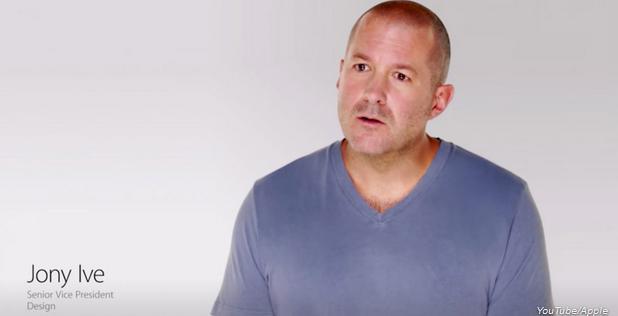04 Sep Five Reasons the 2015 IKEA Catalog Commercial is So Brilliant . . . AND . . . Five Takeaway Marketing Lessons Learned from IKEA’s Video
Sometimes one of the best ways to get your point across in an advertising campaign is by staying true to who or what you are, including how you do business.
IF you can do this at the same time you also poke fun at a cultural icon, you can potentially strike marketing gold, which is exactly what IKEA has done with its new commercial promoting its 2015 IKEA Catalog.
With a simple straightforwardness that belies the wicked irony found in his monologue, IKEA’s spokesman deftly describes the beauties and benefits of the 2015 IKEA Catalog in language so similar to Apple’s copy for describing its iPad’s that it is almost farcical.
The wink-wink, “Do you get the joke?” message begins with the opening scene of the advertisement as it looks like it could have been shot on exactly the same set as an Apple commercial but instead we see Jorgen Eghammer. Identified simply as “Chief Design Guru” and dressed in a basic grey t-shirt, Eghammer smiling stares off-camera left as he begins his monologue.
The affect of the imitative, doppelganger-like approach taken by the producer behind this IKEA video is so spot-on as to be almost scary.
Here, for example, is a screengrab from Apple’s iPad Air ad released in October 2013.
By comparison, here’s a screengrab from IKEA’s commercial promoting its 2015 Catalog:
But IKEA doesn’t stop with a similar set design, lighting approach, spokesperson clothing selection or camera perspective. Not by a long shot. They’re just getting started.
For example, in deepest sincerity, Eghammer explains that the 2015 IKEA Catalog is actually named the bookbook.
I kid you not. LOLOLOL
And the lampooning continues unabated throughout the entire commercial. Consider these gems:
- The bookbook is described as being “so simple and intuitive, using it feels almost familiar.”
- Users are told they should note that the bookbook comes without cables, “even power cables.”
- In fact, the battery life for the 2015 IKEA Catalog is described as “eternal” {Battery life? REALLY!?!?!? Wow! That’s certainly a LOT longer than what we currently get with our iPads in the Politis household.}
- Navigation of the bookbook is through what Eghammer describes as “tactile touch tecnology” . . . in other words, you flip through the pages with your fingers.
- Content in the 2015 IKEA Catalog is “pre-installed” in 328 “high-definition pages.”
- And guess what? Navigation through the bookbook is simple: “right to left to move forward, left to right to move backward.”
I could go on as those are just a few of the smile-inducing characterizations IKEA utilizes in this two-and-a-half-minute advertising masterpiece.
But what, in my opinion, makes this video so masterful? Here is what I believe are . . .
Five Reasons the 2015 IKEA Catalog Video is So Brilliant.
Reason Number 1: IKEA is true to its own brand promise
Whether or not you like IKEA furnishings, the Swedish meatballs served and sold in IKEA stores, or the concept of assembling your own furniture, the reality is that IKEA delivers simple yet beautiful designs to the masses. This commercial for the 2015 IKEA Catalog is straightforward yet elegant at the same time and matches perfectly with the IKEA brand.
Reason Number 2: IKEA strengthens its brand by mimicking Apple’s ads
Apple co-founder Steve Jobs has been praised ad nauseam for his design smarts, and let’s face it, most Apple products are beautifully designed. Similarly, Apple’s ad work is often among the best in the world. By mimicking the “look and feel” of Apple’s advertisements, IKEA subtly benefits from the halo effect provided by Apple’s approach to design in all aspects — products, retailing, and yes, advertising.
Reason Number 3: It’s a joke and everyone is in on the secret
It seems that nearly all of us have an innate desire to know and share secrets. Kids do it, adults do it, and yes, even companies do it.
And in the case of this commercial, IKEA’s approach to promoting the 2015 IKEA Catalog is so over-the-top, deadpan, and yet tongue-in-cheek sincere in its description of the catalog and how to use it that even the dullest of dullards understands that the 2015 IKEA Catalog is simply that — a catalog and NOT the latest technology gewgaw.
“. . . even the dullest of dullards understands that the 2015 IKEA Catalog is simply that — a catalog and NOT the latest technology gewgaw.”
Reason Number 4: Humor = engaging; more engagement = more sharing
And because we “know” the commercial is a joke, a joke that IKEA shared with us, we are apt to like IKEA more than we already do. And . . . we want to share the joke with others. That’s a winning combination.
In less than 24 hours since IKEA unveiled this commercial on the ‘Net, there are already over 1,500 stories around the globe about the 2015 IKEA Catalog video. I expect that number to increase significantly. I will also not be surprised to see the number of “Shares” across all social media platforms for this commercial to go through the roof.
Reason Number 5: This IKEA commercial will drive more sales
Let’s not forget that IKEA is in business to make money. So getting greater visibility for what is a fairly boring sales and marketing tool — the annual IKEA Catalog — is a good thing for IKEA.
As it is, IKEA printed over 185 million copies of its catalog last year across 22 different languages. That’s a grundle. And trust me, for a company that generated over €28.5 billion in 2013 (over $35 billion), it’s highly unlikely IKEA would continue producing catalogs unless they did their job, which is
- getting people into IKEA stores,
- pushing people to the IKEA Websites, and
- driving more sales.
Or in my vernacular, I am very confident the 2015 IKEA Catalog will help the company to
Drive Action . . . AND . . . Increase Value.
So yes, I’m quite sure this commercial will prove to be successful for IKEA. In fact, it probably is already considered a success inside the firm.
Regardless, you may be thinking, “So what? What’s in it for me?”
Great questions. Let me now share with you my . . .
Five Takeaway Marketing Lessons Learned from IKEA’s Video
Lesson Number 1: Stay true to your brand promise
Regardless of what your company does, where you are based, what products or services your firm sells, every aspect of your marketing must be in line with your brand and your brand promise(s). If any portion of your marketing efforts are off-point or non-congruent from a messaging or positioning or execution standpoint with your brand, that specific effort will fail. And if you continue in your non-congruency, you — and your company — will fail.
Lesson Number 2: Steal from the Best
English Cleric and Writer, Charles Caleb Colton apparently penned the phrase, “Imitation is the sincerest form of flattery.” In this regard, IKEA’s ad mimics Apple’s approach to advertising, and it is a prime example of Colton’s concept of honoring and flattering another, whether that be an individual or an organization.
Obviously, IKEA borrowed the idea for its 2015 IKEA Catalog commercial from Apple. No question about it. IKEA’s video is also a clear parody of the Apple commercial. This too should be without argument.
However, IKEA transformed what was originally Apple’s video approach to promoting its iPad Air to create a commercial all its own. And both of these strategies (the parodying and the transformative direction of the IKEA video) likely give IKEA legal clearance because IKEA is not REALLY stealing Apple’s idea or intellectual property in this instance.
So to be clear, I am not advocating that anyone or any organization actually steal from others as that would be both illegal and immoral. But I am, however, advocating you borrow the best ideas possible, then transform the ideas to make them your own.
“. . . borrow the best ideas possible, then make them your own . . .”
Lesson Number 3: Use humor
Humor is tricky, especially in marketing campaigns.
I believe some industries should never try to be funny in their marketing efforts. Funeral homes for one. Pharmaceutical companies marketing life-saving medicines for another.
In other instances, there are times when it’s temporarily inappropriate to attempt humor in advertisements or to advertise at all.
BUT . . . if you can use humor, and you have funniness oozing out of your veins (or you have the right people working for you), then by all means, go with humor.
When done right, marketing humor is an absolute home run. But be forewarned, done badly, humor can put you and your company in the poorhouse.
Lesson Number 4: Leverage social media AND the media
Contrary to what certain Social Media Experts might tell you, there are no magic formulas for ensuring that something will “go viral” on the ‘Web, especially for company-created commercials/videos. Unfortunately, it seems that each instance of a viral hit is unique from its counterparts. But when it happens, it surely is magical.
A review of many of the viral hits of the past few years suggests a few tips for those seeking viral status:
- Be funny (if you can)
- Do something unique
- Be controversial (if necessary)
- Use cats
Okay, so I’m kidding about the cats comment, although
- if you can successfully use cats in your marketing,
- and the cats are doing stupid cat things,
- and you can be true to your brand promise while using cats,
then go for it. Otherwise, no — no cats.
From the media perspective, I should be clear here that I’m referring to the editorial side of the media. And I include within this category journalists of all types, including bloggers (regardless of their professional training, if any).
But if you live in a country that values a free press as I do, then attempting to leverage the credibility and influence of journalists and the media properties they work for should be extremely high on your list of marketing priorities.
This is something I have done for more than three decades. In the process, I have helped companies
So yes, if you have a newsworthy aspect to your marketing campaigns, be sure to maximize those efforts through targeted publicity programs as well.
Lesson Number 5: Show me the money
Virtually every company is in business to generate money, even non-profits. This being the case, every thing any organization does from a marketing perspective should help the company produce more revenue — either directly or indirectly.
As I stated above, I believe that the video promoting the 2015 IKEA Catalog is on-track in this regard, regardless of how satirical, how tongue-in-cheek, how borrowed the video (and the idea behind it) may be. The bottom line is that IKEA’s commercial is generating additional visibility for the catalog itself, as well as for IKEA. That’s perfect, and I suspect, that is exactly what the marketing team at IKEA hoped it would do.
“. . . every thing any organization does from a marketing perspective should help the company produce more revenue — either directly or indirectly.”
But additional visibility alone is not enough if such visibility does not, in the end, have a bottom line, “Show Me The Money” type of impact on your company.
So . . .
- Can you say the same thing for your marketing efforts? All of them?
- Do your marketing efforts introduce new and prospective customers, partners, employees, investors and/or influencers to your firm and its product and services in a good light?
- Do your advertising campaigns reinforce and strengthen your relationships with existing customers, partners, employees, investors and/or influencers?
- Do your PR programs create new and/or deeper levels of engagement with your existing or prospective customers, partners, employees, investors and/or influencers?
- Can you define and utilize metrics (sometimes called KPIs or Key Performance Indicators) to show how and what you do marketing-wise produces measurable results that contribute to your organization’s financial well-being?
If you did not answer YES to each of the five points above, then I would suggest that you and your marketing programs are off-point and you should go back to the drawing board until you can show a direct or indirect, measurable, bottom line impact for your marketing efforts.
= = = = = = = = = = = = = = = = = = = =
So . . . do you agree or disagree? What did you think about IKEA’s video? And do you believe I’m on- or off-point with the 5 Marketing Lessons I propose can be learned from the commercial for the 2015 IKEA Catalog.
Let me know how you feel, as I truly look forward to hearing back from you.
# # #





No Comments